|
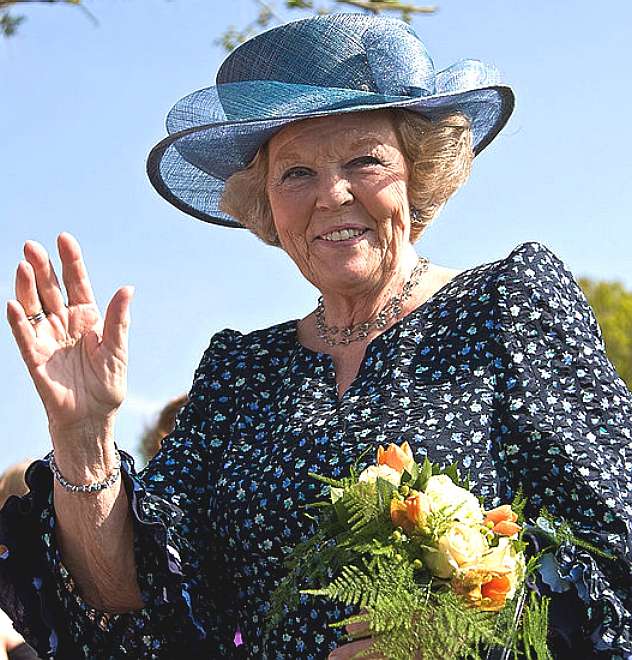
The Netherlands
is the European
part of the Kingdom
of the Netherlands (Dutch: Koninkrijk der
Nederlanden), which is formed by the Netherlands,
the Netherlands
Antilles and Aruba.
The Netherlands is a constitutional
monarchy, located in northwestern Europe.
It borders the North
Sea to the north and west, Belgium
to the south, and Germany
to the east. The current borders were formed in 1839.
The Netherlands is often referred to by the name Holland.
This is, however, misleading, since the provinces of
North and South Holland in the western Netherlands are
only two of the country's twelve provinces. Regardless
of the technicalities, I think of this interesting
country as Holland and Dutch speaking.
The Netherlands is a
densely
populated and geographically low-lying country (its
name literally means "low countries" or
"low lands") and is popularly known for its windmills,
clogs
(wooden shoes), dikes, tulips, bicycles,
and social tolerance.
Its liberal
policies receive international attention, such as those
concerning drugs, prostitution, same-sex
marriage and euthanasia.
The country is host to the International
Court of Justice and the International
Criminal Court at The
Hague.
I
last visited Holland and the Netherlands in 2004, staying at Eindhoven
with friends. We toured
Amsterdam and Volendam looking for windmills,
while shopping liberally for souvenirs consisting of
clothing and towels and mugs. As much of the land is
reclaimed, as you'd expect the land is flat and relatively featureless.
The compensation for this is the charm of the locals, their customs and
wonderful waterway features. As an engineer, my favorites features are the
windmills.
Capital: Amsterdam
Dialing code: 31
Currency: Euro
Population: 16,696,000 (2011)
HOLLAND
GEOGRAPHY
Holland is situated in the west of the Netherlands. A maritime region, Holland lies on the North Sea at the mouths of the Rhine and the Meuse (Maas). It has numerous rivers and lakes and an extensive inland canal and waterway system. To the south is Zealand. The region is bordered on the east by the IJsselmeer and four different provinces of the Netherlands.
Holland is protected from the sea by a long line of coastal dunes. Most of the land area behind the dunes consists of polder landscape lying well below sea level. At present the lowest point in Holland is a polder near Rotterdam, which is about seven meters below sea level. Continuous drainage is necessary to keep Holland from flooding. In earlier centuries windmills were used for this task. The landscape was (and in places still is) dotted with windmills, which have become a symbol of Holland.
Holland is 7,494 square kilometres (land and water included), making it roughly 13% of the area of the Netherlands. Looking at land alone, it is 5,488 square kilometres in size. The combined population is 6.1 million.
The main cities in Holland are Amsterdam, Rotterdam and The Hague. Amsterdam is formally the capital of the Netherlands and its largest city. The Port of Rotterdam is Europe's largest and most important harbour and port. The Hague is the seat of government of the Netherlands. These cities, combined with Utrecht and other smaller municipalities, effectively form a single city—a conurbation called
Randstad.
The Randstad area is one of the most densely populated regions of Europe, but still relatively free of urban sprawl. There are strict zoning laws. Population pressures are enormous, property values are high, and new housing is constantly under development on the edges of the built-up areas. Surprisingly, much of the province still has a rural character. The remaining agricultural land and natural areas are highly valued and protected. Most of the arable land is used for intensive agriculture, including horticulture and greenhouse
agri-businesses.
HOLLAND LANGUAGE
The predominant language spoken in Holland is Dutch. Hollanders sometimes refer to the Dutch language as
"Hollands", instead of the standard term
Nederlands. Inhabitants of Belgium and other provinces of the Netherlands refer to
"Hollands" to indicate someone speaking in a Hollandic dialect, or strong accent.
Standard Dutch was historically largely based on the dialect of the County of Holland, incorporating many traits derived from the dialects of the previously more powerful Duchy of Brabant and County of Flanders. Strong dialectal variation still exists throughout the Low Countries. Today, Holland-proper is the region where the original dialects are least spoken, in many areas having been completely replaced by standard Dutch, and the Randstad has the largest influence on the developments of the standard language—with the exception of the Dutch spoken in Belgium.
Despite this correspondence between standard Dutch and the Dutch spoken in the
Randstad, there are local variations within Holland itself that differ from standard Dutch. The main cities each have their own modern urban dialect, that can be considered a
sociolect. A small number of people, especially in the area north of Amsterdam, still speak the original dialect of the county,
Hollandic. The Hollandic dialect is present in the north: Volendam and Marken and the area around there, West Friesland and the
Zaanstreek; and in a south-eastern fringe bordering on the provinces of North Brabant and Utrecht. In the south on the island of
Goeree-Overflakkee, Zealandic is spoken.
HOLLAND HISTORY
Each of the provinces in the Netherlands has a history that deserves full attention on its own. However, to a certain extent at least, the history of Holland is the history of the Netherlands, and vice versa. See the article on "History of the Netherlands" for a more detailed history. The article here focuses on those points that are specific to Holland itself or that highlight the nature of the role played by Holland in the Netherlands as a whole.
LAND RECLAMATION
The land that is now Holland had never been stable. Over the millennia the geography of the region had been dynamic. The western coastline shifted up to thirty kilometres to the east and storm surges regularly broke through the row of coastal dunes. The Frisian Isles, originally joined to the mainland, became detached islands in the north. The main rivers, the Rhine and the Meuse (Maas), flooded regularly and changed course repeatedly and dramatically.
The people of Holland found themselves living in an unstable, watery environment. Behind the dunes on the coast of the Netherlands a high peat plateau had grown, forming a natural protection against the sea. Much of the area was marsh and bog. By the tenth century the inhabitants set about cultivating this land by draining it. However, the drainage resulted in extreme soil shrinkage, lowering the surface of the land by up to fifteen
metres.
To the south of Holland, in Zeeland, and to the north, in
Frisia, this development led to catastrophic storm floods literally washing away entire regions, as the peat layer disintegrated or became detached and was carried away by the flood water. From the Frisian side the sea even flooded the area to the east, gradually hollowing Holland out from behind and forming the Zuiderzee (the present
IJsselmeer). This inland sea threatened to link up with the "drowned lands" of Zealand in the south, reducing Holland to a series of narrow dune barrier islands in front of a lagoon. Only drastic administrative intervention saved the county from utter destruction. The counts and large monasteries took the lead in these efforts, building the first heavy emergency dikes to bolster critical points. Later special autonomous administrative bodies were formed, the waterschappen ("water control boards"), which had the legal power to enforce their regulations and decisions on water management. As the centuries went by, they eventually constructed an extensive dike system that covered the coastline and the polders, thus protecting the land from further incursions by the sea.
However, the Hollanders did not stop there. Starting around the 16th century, they took the offensive and began land reclamation projects, converting lakes, marshy areas and adjoining mudflats into polders. This continued right into the 20th century. As a result, historical maps of mediaeval and early modern Holland bear little resemblance to the maps of today.
This ongoing struggle to master the water played an important role in the development of Holland as a maritime and economic power and in the development of the character of the people of Holland.
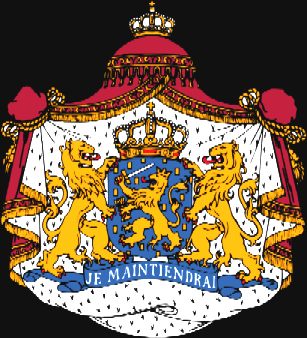
NETHERLANDS
The Netherlands is a constituent country of the Kingdom of the Netherlands, located mainly in North-West Europe and with some islands in the Caribbean. Mainland Netherlands borders the North Sea to the north and west, Belgium to the south, and Germany to the east, and shares maritime borders with Belgium, Germany and the United Kingdom. It is a parliamentary democracy organised as a unitary state. The country capital is Amsterdam and the seat of government is The Hague. The Netherlands in its entirety is often referred to as "Holland", although North and South Holland are actually only two of its twelve provinces.
The Netherlands is a geographically low-lying country, with about 20% of its area and 21% of its population located below sea level, and 50% of its land lying less than one metre above sea level. This distinct feature contributes to the country's name: in Dutch (Nederland), English, and in many other European languages, its name literally means "(The) Low Countries" or "Low Country". Most of the areas below sea level are man-made, caused by centuries of extensive and poorly controlled peat extraction, lowering the surface by several meters. Even in flooded areas peat extraction continued through turf dredging. From the late 16th century land reclamation started and large polder areas are now preserved through elaborate drainage systems with dikes, canals and pumping stations. Much of the Netherlands is formed by the estuary of three important European rivers, which together with their distributaries form the Rhine-Meuse-Scheldt delta. Most of the country is very flat, with the exception of foothills in the far southeast and several low hill ranges in the central parts.
The Netherlands was one of the first countries to have an elected parliament. Among other affiliations, the country is a founding member of the EU, NATO, OECD and WTO. Together with Belgium and Luxembourg it forms the Benelux economic union. The Netherlands had the tenth-highest per capita income in the world in 2011. The country is host to the Organization for the Prohibition of Chemical Weapons and five international courts: the Permanent Court of Arbitration, the International Court of Justice, the International Criminal Tribunal for the Former Yugoslavia, the International Criminal Court and the Special Tribunal for Lebanon. The first four are situated in The Hague, as is the EU's criminal intelligence agency Europol and judicial co-operation agency Eurojust. This has led to the city being dubbed "the world's legal capital". The Netherlands has a market-based mixed economy, ranking 13th of 157 countries according to the Index of Economic Freedom. In May 2011, the Netherlands was ranked as the "happiest" country according to results published by the OECD. The nation is well known for its progressive stance on many issues, with a long tradition of social tolerance.
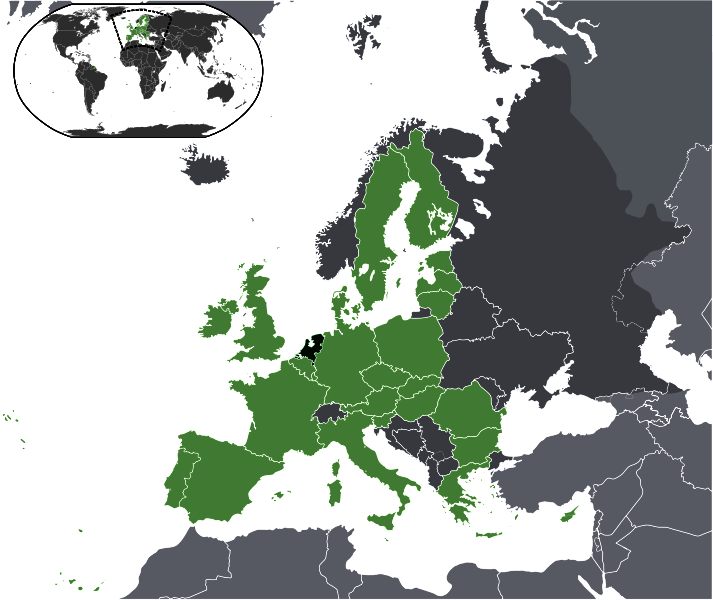
2nd WORLD WAR
The Netherlands intended to remain neutral during the Second World
War, although contingency plans involving the armies of Belgium, France and the United Kingdom were drawn up in case of German aggression. Despite this neutrality,
Nazi Germany invaded the Netherlands on 10 May 1940 as part of their campaign against the Allied forces. French forces in the south and British
ships in the west came to help but turned around quickly, evacuating many civilians and several thousand German prisoners of war from the German elite airborne divisions.
The country was overrun in five days. Only after (but not because of) the bombing of Rotterdam, the main element of the Dutch army surrendered on 14 May 1940, although a Dutch and French force held the western part of Zeeland for some time after the surrender. The Kingdom as such, continued the war from the colonial empire; the government in exile resided in London.
During the occupation, over 100,000 Dutch Jews were rounded up to be transported to Nazi German
concentration camps in Germany, German-occupied Poland and German-occupied Czechoslovakia. By the time these camps were liberated, only 876 Dutch Jews survived. Dutch workers were conscripted for forced labour in German factories, civilians were killed in reprisal for attacks on German soldiers, and the countryside was plundered for food for German soldiers in the Netherlands and for shipment to Germany. Although there were thousands of Dutch who risked their lives by hiding Jews from the Germans, as recounted in The Hiding Place by Corrie ten Boom and The Heart Has Reasons by Mark
Klempner, there were also Dutch who collaborated with the occupying force in hunting down hiding Jews. Local fascists and anti-Bolsheviks joined the
Waffen-SS in the 4th SS Volunteer Panzergrenadier Brigade Netherlands, fighting on the Eastern Front as well as other units. Racial restrictions were relaxed to the extent that even Asians from Dutch East Indies (Indonesia) units were recruited. Political collaborators were members of the fascist
NSB, the only legal political party in the occupied Netherlands.
On 8 December 1941, the Netherlands declared war on
Japan. The government-in-exile then lost control of its major colonial stronghold, the Netherlands East Indies (Indonesia), to Japanese forces in March 1942. "American-British-Dutch-Australian"
(ABDA) forces fought hard in some instances but were overwhelmed. During the Japanese occupation of Indonesia, the Japanese interned Dutch civilians and used Dutch and Indos (Eurasians of Dutch and Indonesian descent) alike as forced labour, both in the Netherlands East Indies and in neighbouring
countries. This included forcing women to work as "comfort women" (sex slaves) for Japanese personnel.
The Dutch Red Cross reported the deaths in Japanese custody of 14,800
European civilians out of 80,000 interned and 12,500 of the 34,000 POW captured.] A later UN report stated that 4 million people died in Indonesia as a result of famine and forced labour (known as
romusha) during the Japanese occupation. Some military personnel escaped to Australia and other Allied countries from where they carried on the fight against Japan. Soon after VE day, the Dutch fought a colonial war against the new republic of Indonesia.
Princess Juliana of the Netherlands, the only child of Queen Wilhelmina and heir to the throne, sought refuge in Ottawa, Canada, with her two daughters, Beatrix and Irene, during the war. During Princess Juliana’s stay in Canada, preparations were made for the birth of her third child. To ensure the Dutch citizenship of this royal baby, the Canadian Parliament passed a special law declaring Princess Juliana's suite at the Ottawa Civic Hospital “extraterritorial”.
On 19 January 1943, Princess Margriet was born. The day after Princess Margriet's birth, the Dutch flag was flown on the Peace Tower. This was the only time in history a foreign flag has waved above Canada’s Parliament Buildings. In 1944–45, the First Canadian Army, which included Canadian, British and Polish troops, was responsible for liberating much of the Netherlands from German occupation. The joyous "Canadian summer" that ensued after the liberation, forged deep and long-lasting bonds of friendship between the Netherlands and Canada (See Canada–Netherlands relations). In 1949, Dutch troops occupied an area of 69 km2 (27 sq mi) of the British zone of occupied Germany and annexed it. At that time, these areas were inhabited by almost 10,000 people.
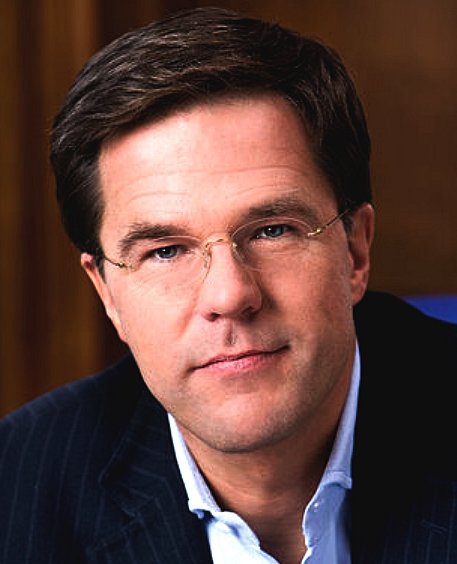
RECENT HISTORY 1945 -->
After the war, the Dutch economy prospered by leaving behind an era of neutrality and gaining closer ties with neighbouring states. The Netherlands was one of the founding members of the Benelux (Belgium, the Netherlands and Luxembourg) grouping, was among the twelve founding members of the North Atlantic Treaty Organisation (NATO), and was among the six founding members of the European Coal and Steel Community, which would later evolve into the EEC (Common Market) and then the European Union.
The 1960s and 1970s were a time of great social and cultural change, such as rapid ontzuiling (literally: depillarisation), a term that describes the decay of the old divisions along class and religious lines. Youths, and students in particular, rejected traditional mores and pushed for change in matters such as women's rights, sexuality, disarmament and
environmental issues.
Today, the Netherlands is regarded as a liberal country, considering its drug policy and its legalisation of euthanasia. On 1 April 2001, the Netherlands became the first nation to recognize
same-sex marriage.
On 10 October 2010 the Netherlands Antilles—a former country of the Kingdom of the Netherlands in the Caribbean—was dissolved. Referendums were held on each island of the Netherlands Antilles between June 2000 and April 2005 to determine their future status. As a result the islands of Bonaire, Sint Eustatius and Saba (the BES islands) were to obtain closer ties with the Netherlands. This led to the incorporation of these three islands into the country of the Netherlands as special municipalities upon the dissolution of the Netherlands Antilles. The special municipalities are collectively known as the Caribbean Netherlands.
GEOGRAPHY NETHERLANDS
The European area of the Netherlands lies between latitudes 50° and 54° N, and longitudes 3° and 8° E.
The country is divided into two main parts by three large rivers, the Rhine
(Rijn) and its main distributaries, the Waal and the Meuse (Maas). These rivers functioned as a natural barrier between earlier fiefdoms and hence created traditionally a cultural divide, as is evident in some phonetic traits that are recognizable north and south of these "Large Rivers" (de Grote
Rivieren).
The southwestern part of the Netherlands is a river delta and two tributaries of the Scheldt (Westerschelde and Oosterschelde). There is only one significant branch of the Rhine, the IJssel river, discharging into the IJsselmeer, the former Zuiderzee ('southern sea'). This river also forms a linguistic divide: people to the east of this river speak Dutch Low Saxon dialects (except for the province of Friesland, which has its own language).
FLOODS
Main articles: Flood control in the Netherlands, Floods in the Netherlands, and Storm tides of the North Sea
Over the centuries, the Dutch coastline has changed considerably as a result of
human intervention and natural disasters. Most notable in terms of land loss is the 1134 storm, which created the archipelago of Zeeland in the southwest.
On 14 December 1287, St. Lucia's flood affected the Netherlands and Germany killing more than 50,000 people in one of the most destructive floods in recorded
history. The St. Elizabeth flood of 1421 and the mismanagement in its aftermath destroyed a newly reclaimed polder, replacing it with the 72-square-kilometre (28 sq mi) Biesbosch tidal floodplains in the south-centre. The last major flood in the Netherlands took place in early February 1953, when a huge storm caused the collapse of several dikes in the southwest of the Netherlands. More than 1,800 people drowned in the ensuing inundations. The Dutch government subsequently decided on a large-scale program of public works (the "Delta Works") to protect the country against future flooding. The project took more than thirty years to complete.
The disasters were partially increased in severity through human influence. People had drained relatively high lying swampland to use it as farmland. This drainage caused the fertile peat to compress and the ground level to drop, whereby they would lower the water level to compensate for the drop in ground level, causing the underlying peat to compress even more. Due to the flooding, farming was difficult, which encouraged foreign trade, the result of which was that the Dutch were involved in world affairs since the early 14th/15th century. The flooding problem remains unsolvable to this day. Also, up until the 19th century peat was mined, dried, and used for fuel, further adding to the problem.
To guard against floods, a series of defences against the water were contrived. In the first millennium AD, villages and farmhouses were built on man-made hills called terps. Later, these terps were connected by dikes. In the 12th century, local government agencies called "waterschappen" (English "water bodies") or "hoogheemraadschappen" ("high home councils") started to appear, whose job it was to maintain the water level and to protect a region from floods. (These agencies exist to this day, performing the same function.) As the ground level dropped, the dikes by necessity grew and merged into an integrated system. By the 13th century, windmills had come into use in order to pump water out of areas below sea level. The windmills were later used to drain lakes, creating the famous polders.
In 1932, the Afsluitdijk (English "Closure Dike") was completed, blocking the former Zuiderzee (Southern Sea) from the North Sea and thus creating the IJsselmeer (IJssel Lake). It became part of the larger Zuiderzee Works in which four polders totalling 2,500 square kilometres (965 sq mi) were reclaimed from the sea.
Additionally, the Netherlands is one of the countries that may suffer most from climate change. Not only is the rising sea a problem, but also erratic weather patterns may cause the rivers to overflow.
CLIMATE
The predominant wind direction in the Netherlands is southwest, which causes a moderate
maritime climate, with cool summers and mild winters. This is especially the case with places within direct proximity of the Dutch coastline, which sometimes are over 10 °C (18 °F) warmer (in winter) or cooler (in summer) than places in the (south)east of the country.
Ice days (maximum temperature below 0 °C) usually occur from December until February, with the occasional rare ice day prior to or after that period. Freezing days (minimum temperature below 0 °C) occur much more often, usually ranging from mid November to late March, but not rarely measured as early as mid October and as late as mid May. If one chooses the height of measurement to be 10 cm. above ground instead of 150 cm., one may even find such temperatures in the middle of the summer. On average, snow can occur from November to April, but can be measured in May or October too, however, unlike these data suggest, there hasn't neither been any snow in April nor in May for years.
Warm days (maximum temperature above 20 °C) in De Bilt are usually measured in the time span of April until October, but in some parts of the country such temperatures can also occur in March or even in November or February (this is usually not in De Bilt, however). Summer days (maximum temperature above 25 °C) are usually measured in De Bilt from May until September, tropical days (maximum temperature above 30 °C) are rare and usually occur only from June until August.
Precipitation throughout the year is relatively equally shared by each month. Summer and autumn months tend to gather a little bit more precipitation than other months, mainly because of the intensity of the rainfall rather than the frequency of rain days (this is especially the case in summer, when
lightning too is much more frequent than otherwise).
The number of sunshine hours is affected by the fact that due to the geographical latitude the length of the days varies between barely eight hours in December and nearly 17 hours in June.
ENVIRONMENT
The Netherlands has 20 national parks and hundreds of other nature reserves. Most are owned by Staatsbosbeheer and Natuurmonumenten and include lakes, heathland, woods, dunes and other habitats.
Phytogeographically, the Netherlands is shared between the Atlantic European and Central European provinces of the Circumboreal Region within the Boreal Kingdom. According to the World Wide Fund for Nature, the territory of the Netherlands belongs to the ecoregion of Atlantic mixed forests.
In 1871 the last old original natural woods (Beekbergerwoud) were cut down, and most woods today are planted monocultures of trees like Scots Pine and trees that are not native to the Netherlands. These woods were planted on anthropogenic heaths and sand-drifts (overgrazed heaths) (Veluwe).
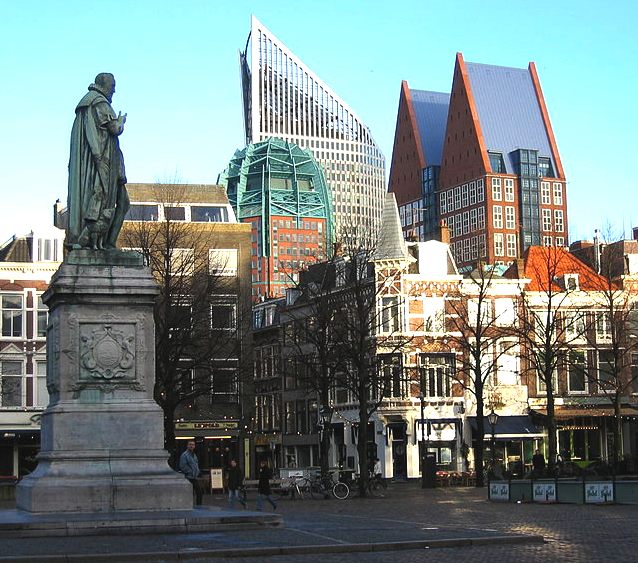
POLITICS
The Netherlands has been a constitutional monarchy since 1815 and a parliamentary democracy since 1848. The Netherlands is described as a consociational state. Dutch politics and governance are characterised by an effort to achieve broad consensus on important issues, within both the political community and society as a whole. In 2010, The Economist ranked the Netherlands as the 10th most democratic country in the world.
The monarch is the head of state, at present Queen Beatrix. Constitutionally, the position is equipped with limited powers. The monarch can exert some influence during the formation of a new cabinet, where they serve as neutral arbiter between the political parties. Additionally, the king (the title queen has no constitutional significance) has the right to be briefed and consulted. Depending on the personality and qualities of the king and the ministers, the king might have influence beyond the power granted by the constitution.
In practice, the executive power is formed by the council of Ministers, the deliberative council of the Dutch cabinet. The cabinet consists usually of 13 to 16 ministers and a varying number of state secretaries. One to three ministers are ministers without portfolio. The head of government is the Prime Minister of the Netherlands, who often is the leader of the largest party of the coalition. In fact, this has been continuously the case since 1973. The Prime Minister is a primus inter pares, meaning he has no explicit powers beyond those of the other ministers. Currently, the Prime Minister is Mark Rutte.
The cabinet is responsible to the bicameral parliament, the States-General, which also has legislative powers. The 150 members of the House of Representatives, the Lower House, are elected in direct elections, which are held every four years or after the fall of the cabinet (by example: when one of the chambers carries a motion of no-confidence, the cabinet offers its resignation to the monarch). The States-Provincial are directly elected every four years as well. The members of the provincial assemblies elect the 75 members of the Senate, the upper house, which has less legislative powers, as it can merely reject laws, not propose or amend them.
Both trade unions and employers organisations are consulted beforehand in policymaking in the financial, economic and social areas. They meet regularly with government in the Social-Economic Council. This body advises government and its advice cannot be put aside easily.
The Netherlands has a long tradition of social tolerance. In the 18th century, while the Dutch Reformed Church was the state religion, Catholicism, other forms of Protestantism, such as Baptists and Lutherans, and Judaism were tolerated. In the late 19th century this Dutch tradition of religious tolerance transformed into a system of pillarisation, in which religious groups coexisted separately and only interacted at the level of government. This tradition of tolerance is linked to Dutch criminal justice policies on recreational drugs, prostitution, LGBT rights, euthanasia, and abortion, which are among the most liberal in the world.
POLITICAL PARTIES
Due to the multi-party system, no single party has held a majority in parliament since the 19th century, and coalition cabinets had to be formed. Since suffrage became universal in 1919, the Dutch political system has been dominated by three families of political parties: the strongest family were the Christian democrats, currently represented by the Christian Democratic Appeal (CDA), second were the social democrats, of which the Labour Party (PvdA), and third were the liberals, of which the People's Party for Freedom and Democracy (VVD) is the main representative.
These parties cooperated in coalition cabinets in which the Christian democrats had always been a partner: so either a centre left coalition of the Christian democrats and social democrats was ruling or a centre right coalition of Christian democrats and liberals. In the 1970s, the party system became more volatile: the Christian democratic parties lost seats, while new parties became successful, such as the radical democrat and progressive liberal D66.
In the 1994 election, the CDA lost its dominant position. A "purple" cabinet was formed by VVD, D66, and PvdA. In the 2002 elections, this cabinet lost its majority, due to an increased support for the CDA and the rise of the far-right LPF, a new political party, comparable to the French Front National around Pim Fortuyn, who was assassinated a week before the elections. A short-lived cabinet was formed by CDA, VVD, and LPF, which was led by CDA leader Jan Peter Balkenende. After the 2003 elections in which the LPF lost most of its seats, a cabinet was formed by CDA, VVD, and D66. The cabinet initiated an ambitious program of reforming the welfare state, the health care system, and the immigration policies.
In June 2006, the cabinet fell after D66 voted in favour of a motion of no confidence against minister of immigration and integration Rita Verdonk, who had instigated an investigation of the asylum procedure of VVD MP Ayaan Hirsi Ali. A caretaker cabinet was formed by CDA and VVD, and general elections were held on 22 November 2006. In these elections, the CDA remained the largest party and the Socialist Party made the largest gains. The formation of a new cabinet took three months, resulting in a coalition of CDA, PvdA, and
Christian Union.
On 20 February 2010, the cabinet fell when the PvdA refused to prolong the involvement of the Dutch Army in Uruzgan, Afghanistan. Snap elections were held on 9 June 2010, with devastating results for the previously largest party, the CDA, which lost about half of its seats, resulting in 21 seats. The VVD became the largest party with 31 seats, closely followed by the PvdA with 30 seats. The big winner of the 2010 elections was Geert Wilders whose extreme-right wing PVV , the ideological successor to the LPF, more than doubled in number of seats. Negotiation talks for a new
government resulted in a minority government VVD-led (a first) in coalition with CDA as of 14 October 2010. This unprecedented minority government was supported by PVV, but proved ultimately to be unstable, when on 21 April 2012, PVV-leader Wilders unexpectedly
'torpedoed seven weeks of austerity talks' on new austerity measures, paving the way for early elections.
VVD and PvdA were the big winners of the elections. Since 5 November 2012 they form the second Rutte cabinet.
ADMINISTRATIVE DIVISIONS
The Netherlands is divided into twelve administrative regions, called provinces, each under a Governor, who is called Commissaris van de Koningin (Commissioner of the Queen), except for the province Limburg where the commissioner is called Gouverneur (Governor). All provinces are divided into municipalities (gemeenten), 430 in total (13 March 2010).
The country is also subdivided in water districts, governed by a water board (waterschap or hoogheemraadschap), each having authority in matters concerning water management. As of 1 January 2005 there are 27. The creation of water boards actually pre-dates that of the nation itself, the first appearing in 1196. The Dutch water boards are among the oldest democratic entities in the world still in existence.
The administrative structure on the 3 BES islands, also known as the Caribbean Netherlands, is different. These islands have the status of openbare lichamen (public bodies) and are generally referred to as special municipalities. They are not part of a province.
FOREIGN RELATIONS
The history of Dutch foreign policy has been characterized
by its neutrality. Since the Second World War the Netherlands has become a member of a large number of international organisations, most prominently the
UN, NATO and the EU. The Dutch economy is very open and relies on international trade.
The foreign policy of the Netherlands is based on four basic commitments: to atlantic cooperation, to European integration, to international development and to international law. One of the more controversial international issues surrounding the Netherlands is its liberal policy towards soft
drugs.
During and after the Dutch Golden Age, the Dutch people built up a commercial and colonial empire, which fell apart quickly after the
Second World War. The historical ties inherited from its colonial past still influence the foreign relations of the Netherlands.
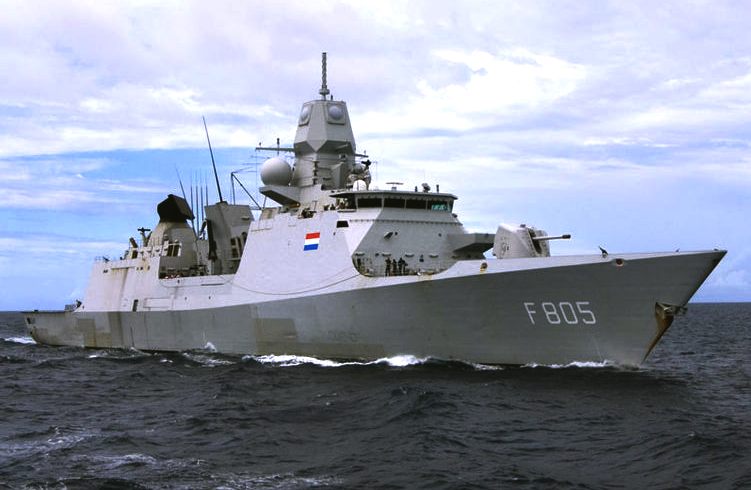
MILITARY
The Netherlands has one of the oldest standing armies in Europe; it was first established as such by Maurice of Nassau. The Dutch army was used throughout the Dutch Empire. After the defeat of
Napoleon, the Dutch army was transformed into a conscription army. The army was unsuccessfully deployed during the Belgian revolution in 1830. After 1830, it was deployed mainly in the Dutch colonies, as the Netherlands remained neutral in European wars (including
World War I), until the Netherlands was invaded in World War II and quickly defeated by the Wehrmacht in May
1940.
The Netherlands abandoned its neutrality in 1948 when it signed the Treaty of Brussels, and later became a founding member of
NATO in 1949. The Dutch military was therefore part of the NATO strength in Cold War Europe, deploying its army to several bases in Germany. In 1996 conscription was suspended, and the Dutch army was once again transformed into a professional army. Since the 1990s the Dutch army has been involved in the Bosnian War and the Kosovo War, it held a province in Iraq after the defeat of Saddam Hussein, and it was engaged in Afghanistan.
The military is composed of four branches, all of which carry the prefix Koninklijke (Royal):
* Koninklijke Landmacht (KL), the Royal Netherlands Army
* Koninklijke Marine (KM), the Royal Netherlands Navy, including the Naval Air Service and Marine Corps
* Koninklijke Luchtmacht (KLu), the Royal Netherlands Air Force
* Koninklijke Marechaussee (KMar), the Royal Military Police, tasks include military police and border control
General Tom Middendorp is the current Commander of the Netherlands armed forces. All military specialities except the submarine service and the Royal Netherlands Marine Corps
(Korps Mariniers) are open to women. The Korps
Commandotroepen, the Special Operations Force of the Netherlands Army, is open to women, but because of the extremely high physical demands for initial training, it is almost impossible for women to become a commando. The Dutch Ministry of Defence employs more than 70,000 personnel, including over 20,000 civilians and over 50,000 military personnel. In April 2011 the government announced a major reduction in its military due to a cut in government expenditure, including a decrease in the number of tanks, fighter
aircraft, naval ships and senior officials.
ECONOMY
The Netherlands has a developed economy and has been playing a special role in the European economy for many centuries. Since the 16th century, shipping, fishing, trade, and banking have been leading sectors of the Dutch economy. The Netherlands is one of the world's 10 leading exporting countries. Foodstuffs form the largest industrial sector. Other major industries include chemicals, metallurgy, machinery, electrical goods, and tourism. Examples include
Unilever, Heineken, financial services (ING), chemicals (DSM),
petroleum refining (Shell), electronical machinery (Philips,
ASML) and car navigation TomTom.
The Netherlands has the 17th largest economy in the world, and ranks 10th in GDP (nominal) per capita. Between 1997 and 2000 annual economic growth (GDP) averaged nearly 4%, well above the European average. Growth slowed considerably from 2001 to 2005 with the global economic slowdown, but accelerated to 4.1% in the third quarter of 2007. Inflation is 1.3%, and unemployment is at 4.0% of the labour force. By Eurostat standards, unemployment in the Netherlands is at 4.1% (April 2010) – the lowest rate of all European Union member states. But in Q3 and Q4 2011, the Dutch economy contracted by 0.4% and 0.7%, respectively due to European Debt Crisis, while in Q4 the Eurozone economy shrunk by 0.3%. The Netherlands also has a relatively low GINI coefficient of 0.326. Despite ranking only 7th in GDP per capita,
UNICEF ranked the Netherlands 1st in child well-being. On the Index of Economic Freedom Netherlands is the 13th most free market capitalist economy out of 157 surveyed countries.
Amsterdam is the financial and business capital of the Netherlands. The Amsterdam
Stock Exchange
(AEX), part of Euronext, is the world's oldest stock exchange and is one of Europe's largest bourses. It is situated near Dam Square in the city's centre. As a founding member of the euro, the Netherlands replaced (for accounting purposes) its former currency, the "gulden" (guilder), on 1 January 1999, along with 15 other adopters of the euro. Actual euro coins and banknotes followed on 1 January 2002. One euro was equivalent to 2.20371 Dutch guilders. However, in the Caribbean Netherlands, the
U.S. dollar is used instead of the
euro.
The Netherlands' location gives it prime access to markets in the UK and Germany, with the port of Rotterdam being the largest port in Europe. Other important parts of the economy are international trade (Dutch colonialism started with cooperative private enterprises such as the VOC), banking and transport. The Netherlands successfully addressed the issue of public finances and stagnating job growth long before its European partners. Amsterdam is the 5th busiest tourist destination in Europe with more than 4.2 million international visitors. Since the enlargement of the EU large numbers of migrant workers have arrived in the Netherlands from central and eastern Europe.
The country continues to be one of the leading European nations for attracting foreign direct investment and is one of the five largest investors in the United States. The economy experienced a slowdown in 2005, but in 2006 recovered to the fastest pace in six years on the back of increased exports and strong investment. The pace of job growth reached 10-year highs in 2007. The Netherlands moved up from the 11th position in the Global Competitiveness Index to the 9th position in 2007.
One of the largest natural gas fields in the world is situated near
Slochteren. Exploitation of this field resulted in a total revenue of €159 billion since the mid 1970s. With just over half of the reserves used up and an expected continued rise in oil prices, the revenues over the next few decades are expected to be at least that much.

AGRICULTURE
A highly mechanized agricultural sector employs 4% of the labour force but provides large surpluses for the food-processing industry and for exports. The Dutch rank third worldwide in value of agricultural exports, behind the United States and France, with exports earning $55 billion annually. A significant portion of Dutch agricultural exports are derived from fresh-cut plants, flowers, and bulbs, with the Netherlands exporting two-thirds of the world's total. The Netherlands also exports a quarter of all the world's tomatoes, and trade of one-third of the world's exports of
chilies, tomatoes and cucumbers goes through the country. The Netherlands also exports one-fifteenth of the world's
apples.
TRANSPORT
Rotterdam has the largest port in Europe, with the rivers Meuse and Rhine providing excellent access to the hinterland upstream reaching to Basel, Switzerland, and into France. In 2006, Rotterdam was the world's seventh largest container port in terms of Twenty-foot equivalent units
(TEU) handled. The port's main activities are petrochemical industries and general cargo handling and transshipment. The harbour functions as an important transit point for bulk materials and between the European continent and overseas. From Rotterdam goods are transported by ship, river barge, train or road. In 2007, the
Betuweroute, a new fast freight railway from Rotterdam to Germany, was completed.
DEMOGRAPHICS
The Netherlands has an estimated population of 16,742,993 (as of 12 August 2012). It is the 11th most populous country in Europe and the 61st most populous country in the world. Between 1900 and 1950, the country's population almost doubled from 5.1 to 10.0 million people. From 1950 to 2000, the population further increased from 10.0 to 15.9 million people, but the rate of population growth was less than that of the previous fifty years. The estimated growth rate is currently 0.436% (as of 2008).
The fertility rate in the Netherlands is 1.82 children per woman (as of 2011), which is high compared with many other European countries, but below the rate of 2.1 children per woman required for natural population replacement. Life expectancy is high in the Netherlands: 83.08 years for
newborn girls and 78.84 for boys (2012
est). The country has a migration rate of 2.55 migrants per 1,000 inhabitants per year.
The majority of the population of the Netherlands is ethnically Dutch. A 2005 estimate counted: 80.9% Dutch, 2.4% Indonesian, 2.4% German, 2.2% Turkish, 2.0% Surinamese, 1.9% Moroccan, 0.8% Antillean and
Aruban, and 7.4% others. The Dutch are the tallest people in the world, with an average height of 1.81 metres (5 ft 11 in) for adult males and 1.67 metres (5 ft 6 in) for adult females in 2009. People in the south are on average about 2 cm shorter than those in the north.
Dutch people, or descendants of Dutch people, are also found in migrant communities worldwide, notably in Canada, Australia, South Africa and the United States. According to the 2006 US Census, more than 5 million Americans claim total or partial Dutch
ancestry.
There are close to 3 million Dutch-descended Afrikaners living in South Africa. In 1940, there were 290,000 Europeans and Eurasians in Indonesia, but most have since left the country. According to
Eurostat, in 2010 there were 1.8 million foreign-born residents in the Netherlands, corresponding to 11.1% of the total population. Of these, 1.4 million (8.5%) were born outside the EU and 0.428 million (2.6%) were born in another EU Member State.
The Netherlands is the 30th most densely populated country in the world, with 395 inhabitants per square kilometre (1,023 /sq mi)—or 484 inhabitants per square kilometre (1,254 /sq mi) if only the land area is counted. It is the 8th most densely populated country in Europe with a population density of 393/km2. The Randstad is the country's largest conurbation located in the west of the country and contains the four largest cities: Amsterdam in the province North Holland, Rotterdam and The Hague in the province South Holland, and Utrecht in the province Utrecht. The Randstad has a population of 7 million inhabitants and is the 6th largest metropolitan area in Europe.
LANGUAGE
The official language is Dutch, which is spoken by the vast majority of the inhabitants. Another official language is Frisian, which is spoken in the northern province of
Friesland, called Fryslân in that language. A dialect of Frisian and Dutch is spoken in most villages in the west of the province of
Groningen. Frisian has a formal status in the province of
Friesland. Several dialects of Low Saxon (Nedersaksisch in Dutch) are spoken in much of the north and east, like Twents in the region of
Twente, and Drents in the province Drenthe. They are recognised by the Netherlands as regional languages according to the European Charter for Regional or Minority Languages, as well as the Meuse-Rhenish Franconian varieties in the southeastern province of
Limburg, here called Limburgish language. English is an official language in the special municipalities of Saba and Sint
Eustatius. It is widely spoken on these islands. Papiamento is an official language in the special municipality of Bonaire. Yiddish and the Romani language were recognised in 1996 as non-territorial languages.
There is a tradition of learning foreign languages in the Netherlands: about 70% of the total population have good knowledge of conversational English, 55– 59% of German, and 19% of French. Children start with English courses at primary schools when they are about nine years old. English is a mandatory course in all secondary schools. In most lower level secondary school educations
(vmbo), one additional modern foreign language is mandatory during the first two years. In higher level secondary schools
(havo and vwo), two additional modern foreign languages are mandatory during the first three years. Only during the last three years in vwo one foreign language is mandatory. The standard modern languages are French and German, although schools can change one of these modern languages with Spanish, Turkish, Arabic, or Russian. Additionally, schools in the Frisia region teach and have exams in Frisian, and schools across the country teach and have exams in classical Greek and Latin for secondary school (called gymnasium or
vwo+).
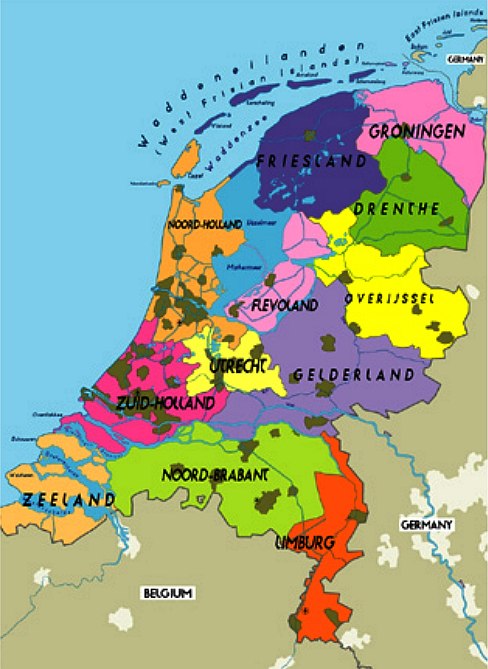
EDUCATION
Education in the Netherlands is compulsory between the ages of 4 and 16, and partially compulsory between the ages of 16 and 18.
All children in the Netherlands usually attend elementary
school from (on average) ages 4 to 12. It comprises eight grades, the first of which is facultative. Based on an aptitude test, the 8th grade teacher's recommendation and the opinion of the pupil's parents or caretakers, a choice is made for one of the three main streams of secondary education (after completing a particular stream, a pupil may still continue in the penultimate year of the next stream):
The vmbo has 4 grades and is subdivided over several levels. Successfully completing the vmbo results in a low-level vocational degree that grants access to the mbo ("middle-level applied education"). This form of education primarily focuses on teaching a practical trade. With the mbo certification, a student can apply for the hbo.
The havo has 5 grades and allows for admission to the hbo ("higher professional education"), which are universities of professional education (or applied sciences) that award professional bachelor degrees that gives access to the
university system.
The vwo (including atheneum and gymnasium) has 6 grades and prepares for studying at a research university. The university consists of a three year bachelor's degree, followed by a one, two or three year master's degree, and finally a four year doctoral degree. Doctoral candidates in the Netherlands are temporary employees of a university.
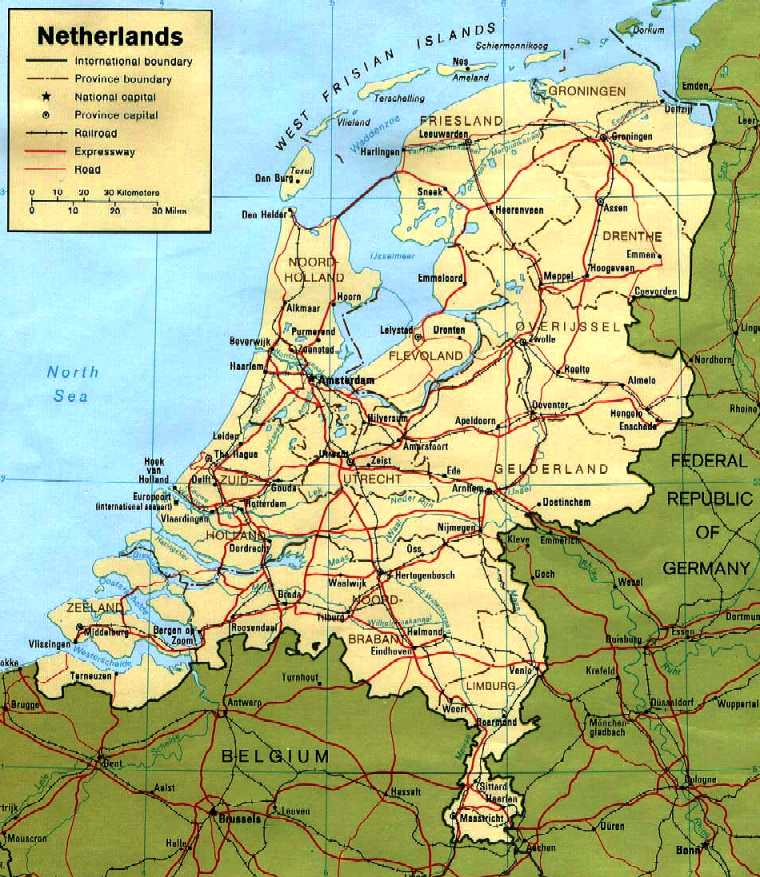
CULTURE
The Netherlands has had many well-known painters. The 17th century, in which the Dutch Republic was prosperous, was the age of the "Dutch Masters", such as Rembrandt van
Rijn, Johannes Vermeer, Jan Steen, Jacob van Ruysdael and many others. Famous Dutch painters of the 19th and 20th century were
Vincent van Gogh and Piet
Mondriaan. M. C. Escher is a well-known graphics artist. Willem de Kooning was born and trained in Rotterdam, although he is considered to have reached acclaim as an American artist. The Netherlands is the country of philosophers Erasmus of Rotterdam and
Spinoza. All of Descartes' major work was done in the Netherlands. The Dutch scientist Christiaan Huygens (1629–1695) discovered Saturn's moon Titan, argued that
light travelled as waves, invented the pendulum
clock and was the first physicist to use mathematical formulae. Antonie van Leeuwenhoek was the first to observe and describe single-celled organisms with a microscope.
In the Dutch Golden Age, literature flourished as well, with Joost van den Vondel and P.C. Hooft as the two most famous writers. In the 19th century, Multatuli wrote about the poor treatment of the natives in Dutch colonies. Important 20th century authors include Harry
Mulisch, Jan Wolkers, Simon Vestdijk, Hella S. Haasse, Cees
Nooteboom, Gerard (van het) Reve and Willem Frederik
Hermans.
Anne Frank's Diary of a Young Girl was published after she died in the
Holocaust and translated from Dutch to all major languages.
Replicas of Dutch buildings can be found in Huis Ten Bosch, Nagasaki, Japan. A similar Holland Village is being built in
Shenyang, China. Windmills, tulips, wooden shoes, cheese, Delftware pottery, and cannabis are among the items associated with the Netherlands by tourists.
Festive days that are celebrated yearly are the Queens birthday and Sinterklaas.
SPORT
Approximately 4.5 million of the 16 million people in the Netherlands are registered to one of the 35,000 sports clubs in the country. About two thirds of the population older than 15 years participates in sports weekly.
In the Netherlands, soccer, tennis,
golf, gymnastics, hockey,
equestrian sports,
swimming, athletics, volleyball and skating are the 10 sports with most members of sports clubs. A lot of amateurs practice them, and the Netherlands is a strong competitor in international tournaments for these sports.
Organization of sports began at the end of the 19th century and the beginning of the 20th century. Federations for sports were established (such as the speed skating federation in 1882), rules were unified and sports clubs came into existence. A Dutch National
Olympic Committee was established in 1912. Thus far, the nation has won 246 medals at the Summer Olympic Games and another 86
medals at the Winter
Olympic Games.
COLONIAL HERITAGE
From the 17th century exploitations of the Dutch East India Company, through 19th century colonisations, Dutch imperial possessions continued to expand, reaching their greatest extent by establishing a hegemony of the Dutch East Indies in the early 20th century. The Dutch East Indies, which later formed modern-day Indonesia, was one of the most valuable European colonies in the world and the most important one for the Netherlands. Over 350 years of mutual heritage has left a significant cultural mark on the Netherlands.
In The Dutch Golden Age of the 17th century, the Netherlands urbanised considerably, mostly financed by corporate revenue from the Asian trade monopolies. Social status was based on merchants' income, which reduced feudalism and considerably changed the dynamics of Dutch society. When the Dutch Royal Family was established in 1815, much of its wealth came from Colonial trade.
Universities such as the Royal Leiden University founded in the 16th century have developed into leading knowledge centres about Southeast Asian and Indonesian studies.
Leiden University has produced leading academics such as Christiaan Snouck Hurgronje, and still has academics who specialise in Indonesian languages and cultures. Leiden University and in particular KITLV are educational and scientific institutions that to this day share both an intellectual and historical interest in Indonesian studies. Other scientific institutions in the Netherlands include the Amsterdam Tropenmuseum, an anthropological museum with massive collections of Indonesian
art, culture, ethnography and anthropology.
The traditions of the Royal Dutch East Indies Army (KNIL) are maintained by the Regiment Van Heutsz of the modern Royal Netherlands Army. A dedicated Bronbeek Museum, a former home for retired KNIL soldiers, exists in Arnhem to this day.
A specific segment of Dutch literature called Dutch Indies literature still exists and includes established authors, such as Louis Couperus, the writer of "The Hidden Force", taking the colonial era as an important source of inspiration. One of the great masterpieces of Dutch literature is the book "Max Havelaar" written by Multatuli in 1860.
The majority of Dutchmen that repatriated to the Netherlands after and during the Indonesian revolution are Indo (Eurasian), native to the islands of the Dutch East Indies. This relatively large Eurasian population had developed over a period of 400 years and were classified by colonial law as belonging to the European legal community. In Dutch they are referred to as 'Indische Nederlanders' (Indies Dutchmen) or more specifically as Indo (short for Indo-European).
Including their second generation descendants, Indos are currently the largest foreign-born group in the Netherlands. In 2008, the Dutch Census Buro for Statistics (CBS) registered 387,000 first and second generation Indos living in the Netherlands. Although considered fully assimilated into Dutch society, as the main ethnic minority in the Netherlands, these 'Repatriants' have played a pivotal role in introducing elements of Indonesian culture into Dutch mainstream culture.
Practically each town in the Netherlands will have a 'Toko' (Dutch Indonesian Shop) or Indonesian restaurant and many 'Pasar Malam' (Night market in Malay/Indonesian) fairs are organised throughout the year. Many Indonesian dishes and foodstuffs have become commonplace in the Netherlands. Rijsttafel a colonial culinary concept and dishes such as Nasi goreng and sateh are very popular in the Netherlands.
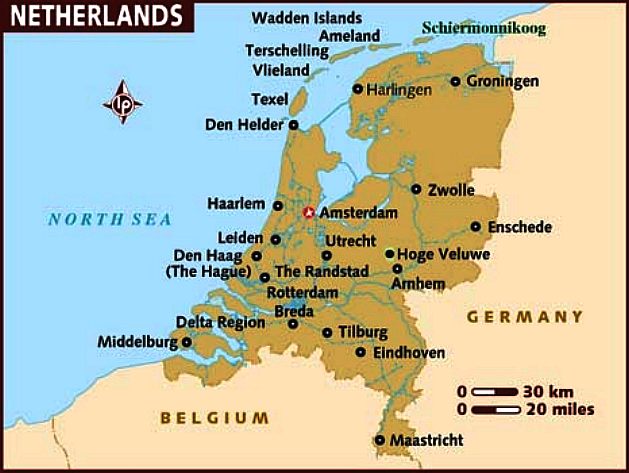
LINKS
Overheid.nl
– official Dutch government portal
Government.nl
– official Dutch government web site
CBS
– Key figures from the Dutch bureau of statistics
Provinces
of Netherlands at statoids.com
Netherlands
entry at The World Factbook
Netherlands
from UCB Libraries GovPubs
Netherlands
at the Open Directory Project
Netherlands
profile from the BBC
News
Wikimedia
Atlas of Netherlands
Geographic
data related to Netherlands
at OpenStreetMap
Key
Development Forecasts for the Netherlands from International Futures
Holland.com
– English website of the Netherlands tourist office
|
Adelaide
Aden
- Yemen
Afghanistan
Africa
Alaska
Albania
Algeria
Amazon
Rainforest
Amsterdam
Antarctic
Arctic
North Pole
Argentina
Asia
Athens
Atlantis
- Plato's Lost City
Australia
Austria
Aztecs
- Mexico
Baghdad
Bahamas
Bahrain
Bangladesh
Barbados
Beachy
Head, England
Belgium
Benin
Berlin
Bermuda
Black
Rock Desert
Bohemia
Bolivia Bonneville
Utah History
Bonneville,
Utah, USA
Brazil
Brighton
- West Pier
British
Columbia
Buckingham
Palace
Bulgaria
Burkina
Faso
Burma
California
Canada
Canary
Islands
Cape
Horn
Cape
Verde
Cape
York - Au
Caribbean
Cayman
Islands
Central
Africa
Chichester
Harbour
Chile
China
Columbo
- Sri Lanka
Columbia
Corfu
Cowes,
Isle of Wight
Croatia
Crooked
Island, Bahamas
Cuba
Cyprus
Czechoslovakia
Darwin
- Australia
Daytona
Beach
Denmark
Eastbounre
Pier, England
Earthquakes
Ecuador
Egypt
Eindhoven Estonia
Equator
Europe
Falkland
Islands
Falmouth,
Cornwall
Fiji
Finland
France
Galapagos
Islands
Geography
Links
Geography
Mountains
Geography
Records
Geography
Resources
Geography
Statistics
|
Germany
Ghana
Gibraltar
- Links
Greece
Greenland
Guinea
Guinea
Bissau
Hawaii
Holland
the Nertherlands
Hollywood,
California, LA
Hong
Kong
Hungary
Hurricanes
Iceland
India
Indonesia
Links
Iran
Iraq
Ireland
Isle
of Man
Isle
of Wight
- The
Needles
Israel
Italy
Ivory
Coast
Jakarta
- Java
Japan
Johannesburg
Jordan
Kent,
England
Kenya
Korea
Kuwait
Kyoto
Lanzarote,
Gran Canaria
Las
Vegas
Lebanon
Liberia
Libya
Liechtenstein
Life
on Earth
Lithuania
London
- Big
Ben
London
Eye
London
Houses
Parliament
London
- Buckingham
Palace
London
- Old
Bailey
London
- Overview
London
- The City
London
- Tower Bridge
London
- Trafalgar
Square
Luxembourg
Madame
Tussauds
Malaysia
Mali
Malta
Marshal
Islands
Mauritania
Maya
Empire -
Central America
Melbourne,
Australia
Middle
East
Melbourne,
Australia
Mexico
Monaco
Morocco
Mountains
Mumbai
Naples-
Italy
National
Geographic
Nepal
New
York
New
Zealand
Niger
Nigeria
North
Africa
Norway
Nova
Scotia
Oceans
and Seas
Oman
Pakistan
Palermo
- Sicily
Palestine
Palma
- Malorca
|
Panama
Canal - Links
Paris
Pendine
Sands
Peru
Philippines
Pisa,
Leaning Tower
Planet
Earth
Poland
Port
Moresby - PNG
Port
Said - Egypt
Portugal
Puerto
Rico
Qatar
Quebec
Rio
de Janeiro
Romania
Rome
Russia
Salt
Lake City
Samoa
Saudi
Arabia
Scandanavia
Scotland
Senegal
Siera
Leone
Singapore
Solomon
Islands
Somalia
South
Africa
South
America
Southampton
Spain
- Espana
Sri
Lanka - Links
Stonehenge
Sudan
Suez
Canal
Sundancer
Holiday Resort
Sussex,
England Index
Sweden
Switzerland
Sydney,
Australia
Syria
Tahiti
- Polynesia
- Links
Tahitian
- Men & Women Customs
Taiwan
Thailand
The
Gambia
Togo
Tokyo,
Japan
Tonga
- Polynesia
Toronto
Trinidad
- Lesser Antilles
Trinidad
and Tobago
Tsunami
Tunbridge
Wells, England
Tunisia
Turkey
Tuvalu
Islands
UAE
- United Arab Emirates
UK
Statistics
Ukraine
United
Kingdom
United
Kingdom -
Gov
USA
Uruguay
Vanuatu
Islands
Vatican
City
Venezuela
Venice
Vienna
Vietnam
Volcanoes
Volendam
Wales
Washington
D.C.
WAYN
Where Are You Now
Wealden
iron industry
Wendover
West
Africa
World
Peace Supporters
Yemen
Yugoslavia
Zurich
|
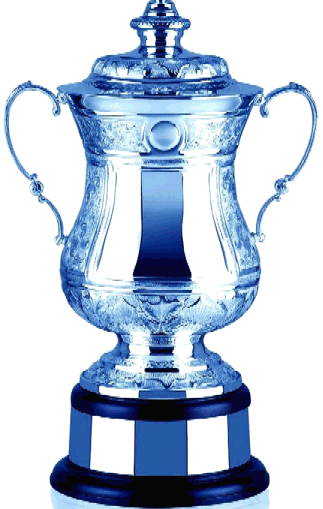
The
Bluebird World Cup Trophy. This friendship cup is to be
awarded to the winners of the Cannonball
Run International series of zero emission rallies.
It represents the move to sustainable pollution free
transport.
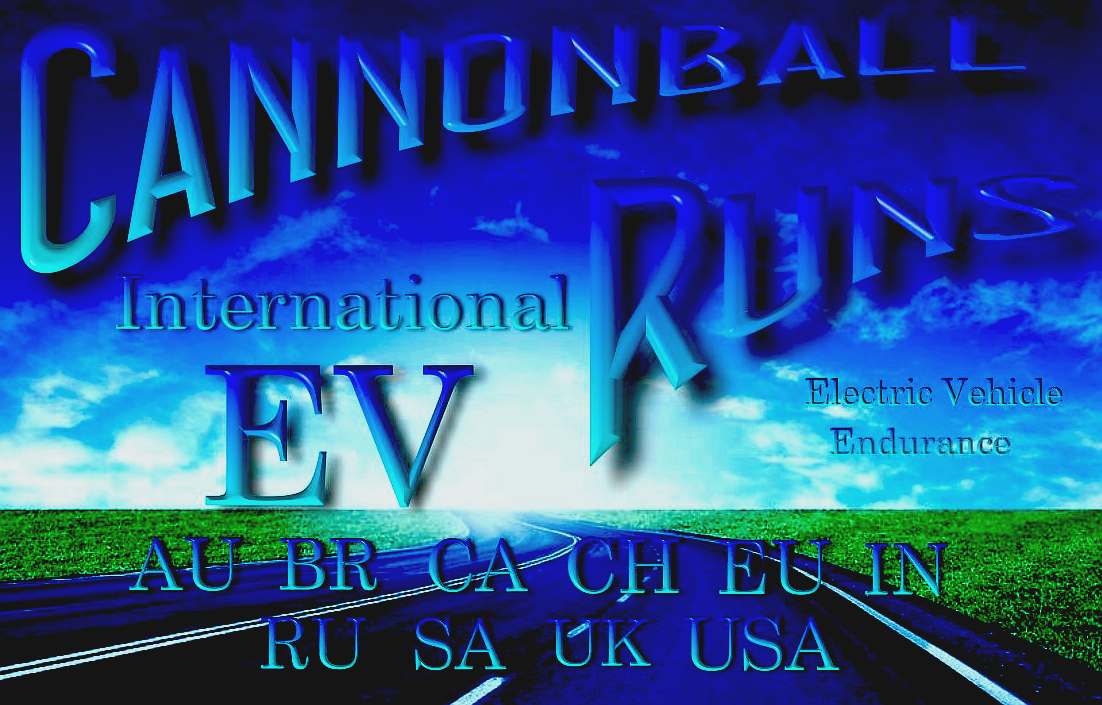
A
new World series of ZEV events from 2015: The Cannonball International series.
Entry to these events are free, provided that the Rules
are followed (for you own safety). The objective is to demonstrate that
transport can be pollution free.
The Italian inland route is shown above. For this event your target should be about
25 hours with instant
cartridge recharging and 40 hours using rapid charging. The route
statistics below are for the coastal run.
Solar
Cola drinkers care about planet
earth
..
Thirst for Life

(330ml
Planet Earth can)

|











